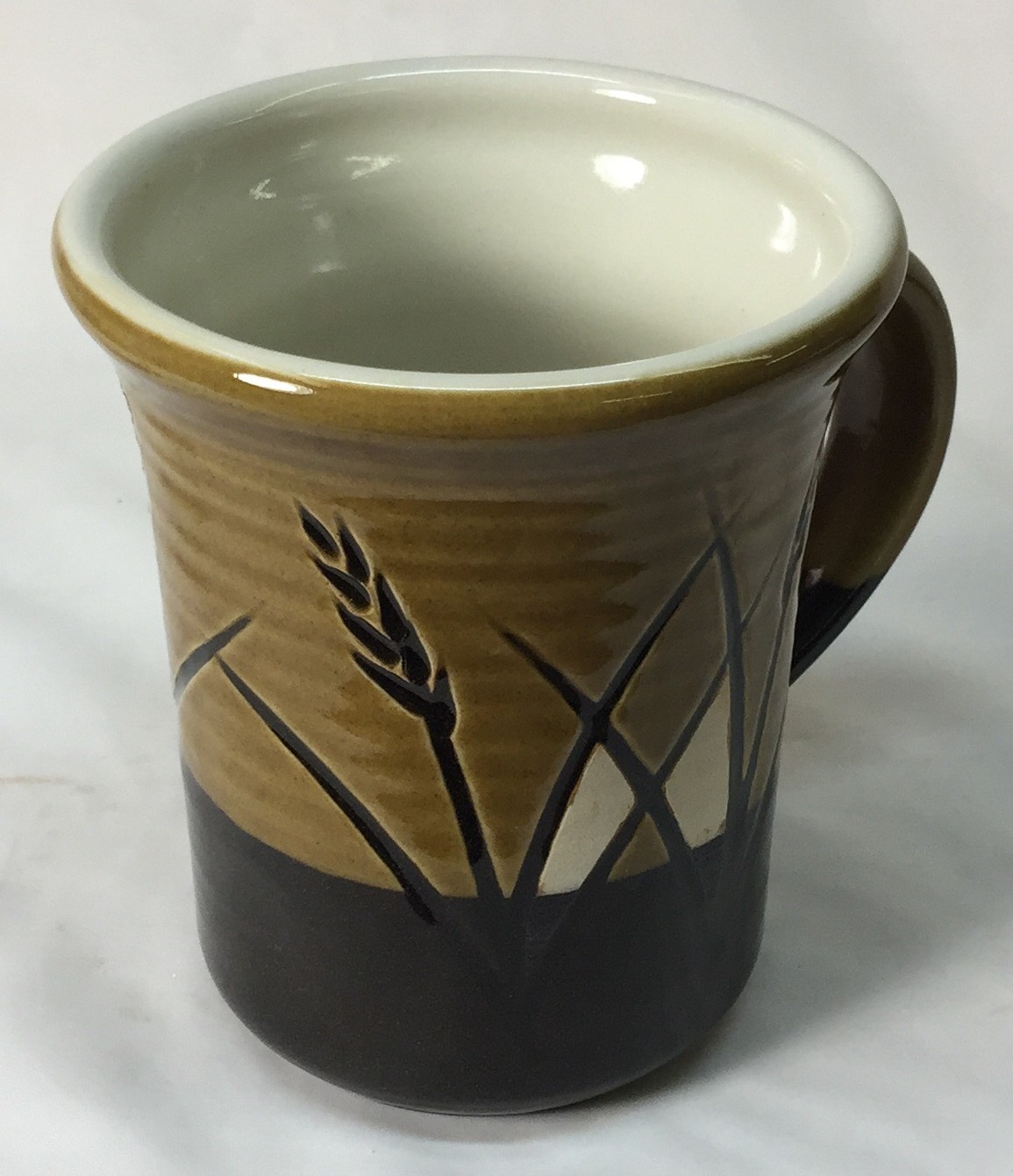A cone 6 black-burning stoneware with a porcelain surface. How?
Black-burning bodies are popular with many potters. This one is stained by adding 10% insight-live.com/material/2911">raw umber to a buff-burning stoneware. Umbers are powerful natural clay colorants, they have high iron and also contain some manganese oxide. Could a white engobe produce a porcelain-like surface on such a clay body? Yes. L3954B engobe was applied during leather-hard stage to this Plainsman Coffee Clay mug (on the inside and partway down the outside). After bisque, transparent G2926B glaze was applied inside and GA6-B outside. Notice the GA6-B over the engobe fires amber but over the black it produces a deep glossy brown. The engobe was mixed into a thixotropic slurry, as explained on the page at PlainsmanClays.com (see link below), and applied in a relatively thin layer. This porcelain-like result is a testament to the covering power of a true engobe. It is no wonder they are so popular in the ceramic tile industry - a red-burning body can be turned white as a porcelain, which enables all the marvellous glazing and decorating they can do.
Pages that reference this post in the Digitalfire Reference Library:
Burnt Umber, Raw Umber, L3954B - Cone 6 Engobe (for M340), Can an engobe block manganese speckle at cone 6?, The L3954B engobe page at PlainsmanClays.com explains how to mix and use it on Plainsman clays bodies at cone 6., Manganese Inorganic Compounds Toxicology, Manganese in Clay Bodies

This post is one of thousands found in the Digitalfire Reference Database. Most are part of a timeline maintained by Tony Hansen. You can search that timeline on the home page of digitalfire.com.
